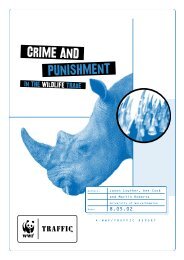In full swing: assessment of trade in orang-utans and ... - WWF UK
In full swing: assessment of trade in orang-utans and ... - WWF UK
In full swing: assessment of trade in orang-utans and ... - WWF UK
You also want an ePaper? Increase the reach of your titles
YUMPU automatically turns print PDFs into web optimized ePapers that Google loves.
INTRODUCTION<br />
Background<br />
From the Snub-nosed Monkeys <strong>of</strong> Ch<strong>in</strong>a to the Lion Tamar<strong>in</strong>s <strong>of</strong> the Amazon <strong>and</strong> the <strong>In</strong>dris <strong>of</strong> Madagascar, nearly half<br />
<strong>of</strong> all the world's primates are threatened with ext<strong>in</strong>ction. Among the apes - the chimpanzees, bonobos, gorillas, <strong>orang</strong><strong>utans</strong><br />
<strong>and</strong> gibbons – two-thirds are <strong>in</strong>cluded on the IUCN Red List <strong>of</strong> Threatened Species (Anon, 2004b).<br />
For the successful conservation <strong>of</strong> primates, it is essential that the root causes <strong>of</strong> the threats that the different species<br />
face, are properly understood. The primary extr<strong>in</strong>sic threats to the majority <strong>of</strong> primates are unquestionably habitat<br />
destruction (Eudey, 1987) <strong>and</strong> hunt<strong>in</strong>g (Rob<strong>in</strong>son & Bennett, 2000), but as rema<strong>in</strong><strong>in</strong>g populations become <strong>in</strong>creas<strong>in</strong>gly<br />
smaller, the impacts <strong>of</strong> secondary threats become more <strong>and</strong> more important. Trade <strong>in</strong> primates, be it <strong>trade</strong> <strong>in</strong> live<br />
animals or <strong>trade</strong> <strong>in</strong> primate products to be used as medic<strong>in</strong>e or as ornaments, can have a dramatic impact on the last<br />
surviv<strong>in</strong>g populations <strong>of</strong> already rare primates (Eudey, 1999).<br />
The <strong>trade</strong> <strong>in</strong> live primates is driven by both domestic <strong>and</strong> <strong>in</strong>ternational markets. With<strong>in</strong> many countries <strong>of</strong> orig<strong>in</strong>, most<br />
live primates are <strong>trade</strong>d as pets. <strong>In</strong> contrast, the <strong>in</strong>ternational <strong>trade</strong> is largely driven by biomedical research, although<br />
<strong>trade</strong> for pets, zoo animals, <strong>and</strong> circus exhibits also<br />
contribute, as does the <strong>trade</strong> <strong>in</strong> primate parts for<br />
traditional medic<strong>in</strong>es (Cowlishaw & Dunbar, 2000).<br />
Furthermore, the relative importance <strong>of</strong> these types <strong>of</strong><br />
<strong>trade</strong> dem<strong>and</strong> differs greatly between regions <strong>and</strong><br />
between species.<br />
Although a great many studies have been conducted on<br />
the effects <strong>of</strong> habitat destruction <strong>and</strong> hunt<strong>in</strong>g on primate<br />
populations (reviewed <strong>in</strong> e.g., Johns 1992, 1987;<br />
Skuropa, 1986), comparatively few data on the severity<br />
<strong>of</strong> <strong>trade</strong> have been collected. This, <strong>in</strong> part, has to do<br />
with the difficulties associated with the data collection.<br />
Data on domestic <strong>trade</strong> are <strong>of</strong>ten difficult to obta<strong>in</strong><br />
(Mittermeier, 1987). Although <strong>trade</strong> <strong>and</strong> hunt<strong>in</strong>g are<br />
tightly l<strong>in</strong>ked, the former almost by def<strong>in</strong>ition <strong>in</strong>volves<br />
the latter, whereas the latter can occur <strong>in</strong> the absence <strong>of</strong><br />
the former. <strong>In</strong> other words, no <strong>trade</strong> occurs without<br />
hunt<strong>in</strong>g, but hunt<strong>in</strong>g can occur without <strong>trade</strong>.<br />
Especially <strong>in</strong> those species where the <strong>in</strong>fant is the ma<strong>in</strong><br />
target, <strong>in</strong>clud<strong>in</strong>g gibbons <strong>and</strong> <strong>orang</strong>-<strong>utans</strong>, mothers are Orangutan Pongo pygmaeus<br />
normally killed <strong>in</strong> order to obta<strong>in</strong> the young <strong>and</strong> hunt<strong>in</strong>g<br />
is an <strong>in</strong>tegral part <strong>of</strong> <strong>trade</strong>. For those species where both the young <strong>and</strong> adults have commercial value, e.g. macaques<br />
<strong>and</strong> langurs, captur<strong>in</strong>g can be done with nets <strong>and</strong> as such <strong>trade</strong> can occur <strong>in</strong> the absence <strong>of</strong> hunt<strong>in</strong>g. Where <strong>trade</strong> occurs<br />
as a by-product <strong>of</strong> subsistence hunt<strong>in</strong>g, for <strong>in</strong>stance when <strong>in</strong>fants are captured when their mothers are killed, its impact<br />
might be limited to the selective target<strong>in</strong>g <strong>of</strong> the mothers dur<strong>in</strong>g normal subsistence hunt<strong>in</strong>g (Mitttermeier, 1987).<br />
However, the dem<strong>and</strong> for <strong>in</strong>fants may <strong>in</strong>tensify hunt<strong>in</strong>g pressure. <strong>In</strong> contrast, when domestic <strong>trade</strong> <strong>in</strong> live animals is the<br />
result <strong>of</strong> dem<strong>and</strong> for meat <strong>and</strong> medic<strong>in</strong>al <strong>in</strong>gredients, its impact is likely to be <strong>of</strong> the same magnitude as bushmeat<br />
hunt<strong>in</strong>g (Oates, 1999). Bushmeat hunt<strong>in</strong>g, especially when it concerns primates, is traditionally associated with west<br />
Credit: <strong>WWF</strong>-Malaysia/Wildtrack Photography<br />
IN FULL SWING:ASSESSMENT OF TRADE IN ORANGUTANS AND GIBBONS ON JAVA AND BALI,INDONESIA 1


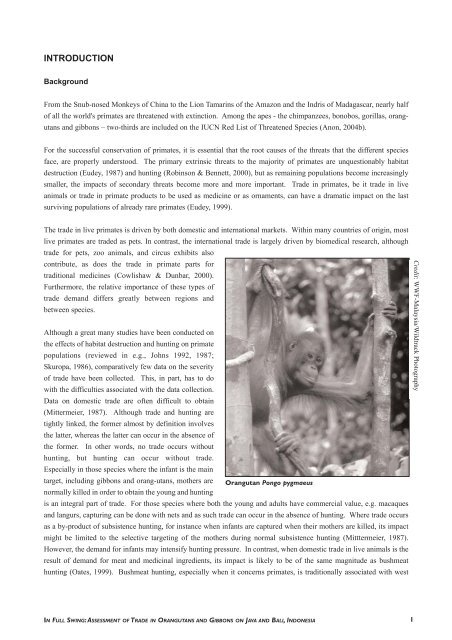
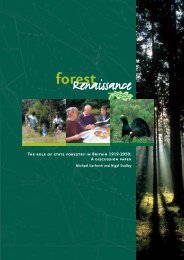
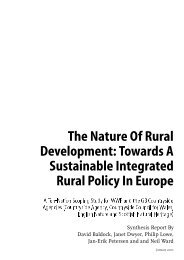
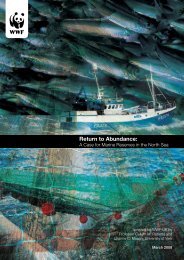

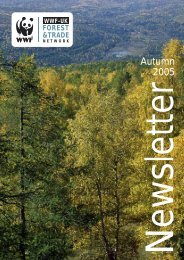

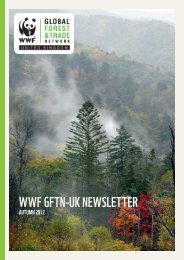
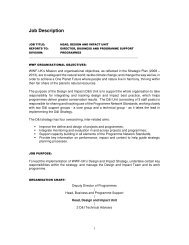
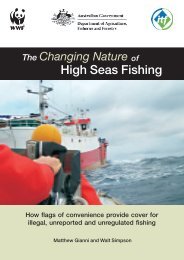
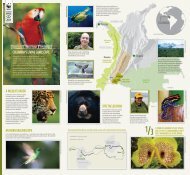
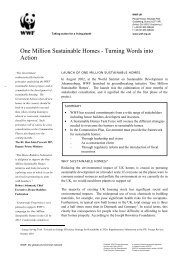
![[PDF] Causes for concern: chemicals and wildlife - WWF UK](https://img.yumpu.com/31929970/1/184x260/pdf-causes-for-concern-chemicals-and-wildlife-wwf-uk.jpg?quality=85)
